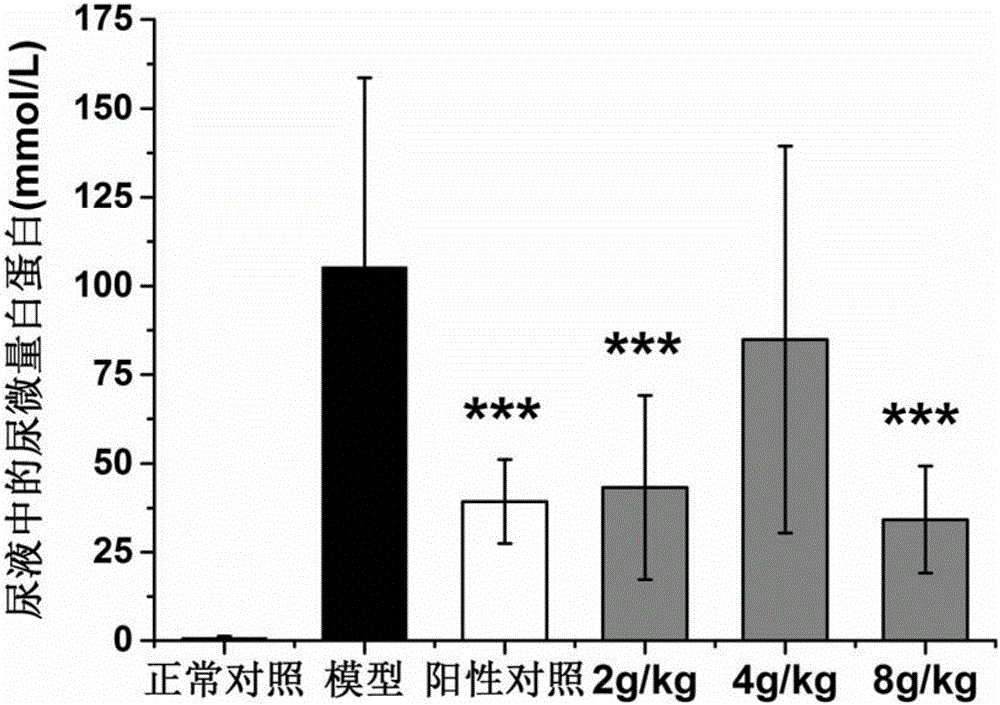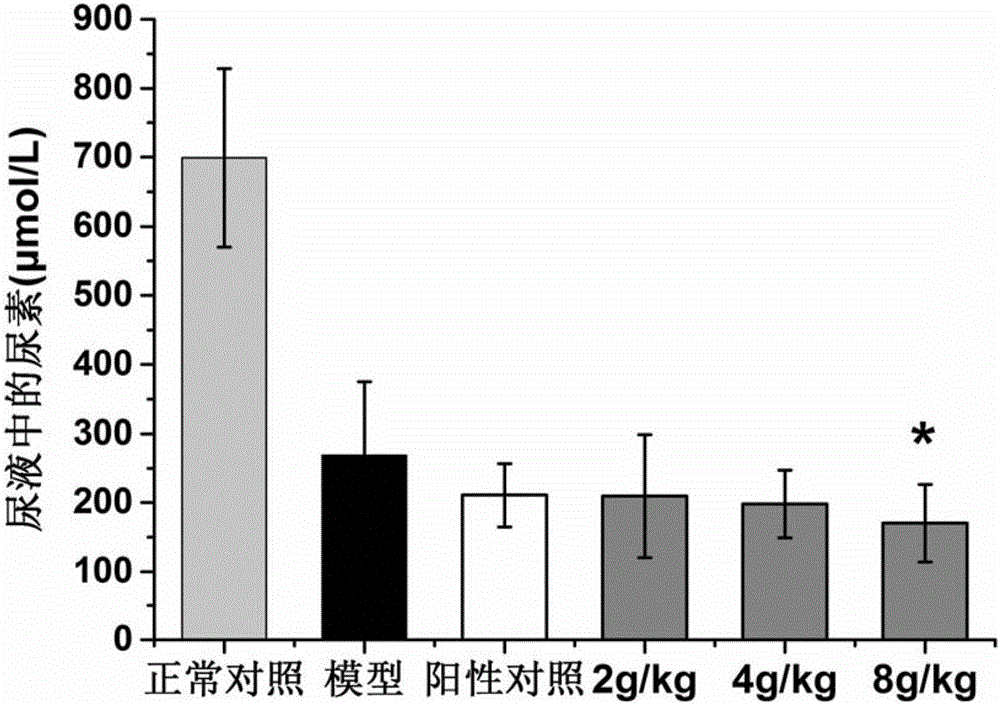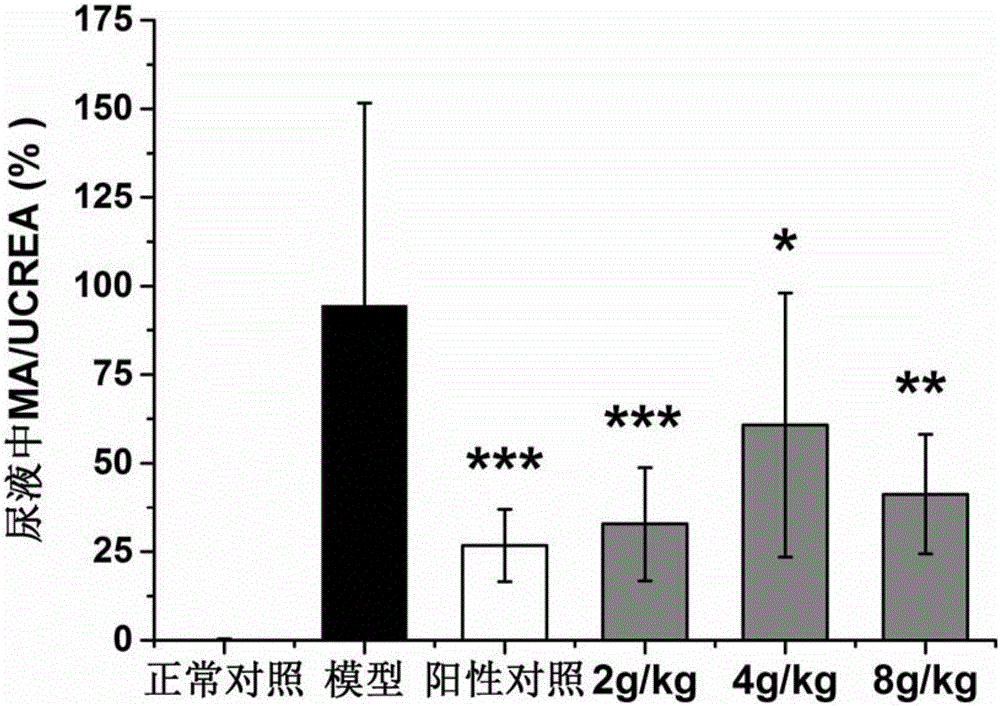Traditional Chinese medicine alcohol extract for treating diabetic nephropathy and preparation method and application thereof
A technology of diabetic nephropathy and extract, which is applied in the field of traditional Chinese medicine extracts, can solve the problems of lack of specific means in the treatment of diabetic nephropathy, and achieve the effects of reducing urinary protein excretion rate, delaying renal function decline, and lowering blood sugar concentration
- Summary
- Abstract
- Description
- Claims
- Application Information
AI Technical Summary
Problems solved by technology
Method used
Image
Examples
Embodiment 1
[0030] Embodiment 1, the extraction of Chinese medicine extract
[0031] Weigh the following prescription:
[0032] Dijincao 150g, Salvia 200g, Raw Astragalus 150g, Anemarrhena 100g, Coptis 60g.
[0033] After mixing the traditional Chinese medicines, add them to 6 times the mass of 60% ethanol aqueous solution, soak for 30 minutes, then reflux and extract twice, each extraction for 1 hour, filter, combine the filtrates, concentrate, and evaporate to dryness, that is Chinese medicine extract of the present invention.
[0034] The Chinese medicine extract prepared in this example is in the form of an extract, 202 g in total, so 1 g of the Chinese medicine extract is equivalent to 3.267 g of the Chinese medicine composition.
Embodiment 2
[0035] Embodiment 2, the influence of Chinese medicine extract of the present invention on blood sugar and renal function
[0036] 1. Animals
[0037] 40 male spontaneous type 2 diabetes model KK-Ay mice, 8w old, Beijing Huafukang Biotechnology Co., Ltd., license number: SCXK (Beijing) 2014-0004; 10 healthy male C57BL / 6J mice, 8w old, Beijing Weitong Lihua Experimental Animal Technology Co., Ltd., license number: SCXK (Beijing) 2012-0001. KK-Ay mice were fed with high-fat diet, Beijing Huafukang Biotechnology Co., Ltd., license number: SCXK (Beijing) 2014-0008; C57BL / 6J mice were fed with normal diet. All animals had free access to water, and were adaptively fed for 1 week at room temperature (22±1)°C in an SPF environment with a 12-h photoperiod. Take blood from the tip of the tail to measure the random blood glucose of KK-Ay mice ≥11.1mmol·L -1 Or fasting blood glucose (FBG) ≥ 7.0mmol·L -1 That is, as a model of diabetes.
[0038] 2. Dosage of mice in each group
[003...
PUM
 Login to View More
Login to View More Abstract
Description
Claims
Application Information
 Login to View More
Login to View More - R&D
- Intellectual Property
- Life Sciences
- Materials
- Tech Scout
- Unparalleled Data Quality
- Higher Quality Content
- 60% Fewer Hallucinations
Browse by: Latest US Patents, China's latest patents, Technical Efficacy Thesaurus, Application Domain, Technology Topic, Popular Technical Reports.
© 2025 PatSnap. All rights reserved.Legal|Privacy policy|Modern Slavery Act Transparency Statement|Sitemap|About US| Contact US: help@patsnap.com



